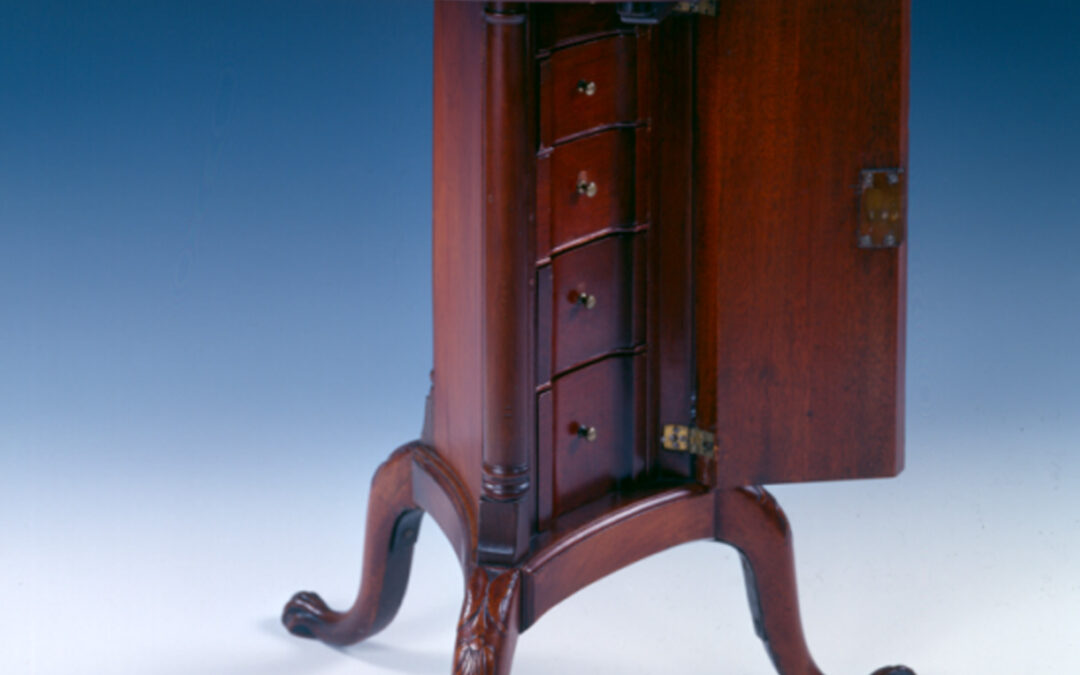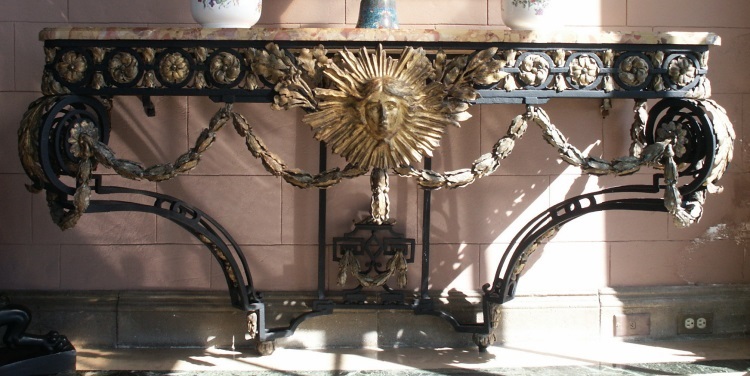
by NRF User | Jan 3, 2024
These red damask wingchairs draw your attention when you enter the Great Hall. Although they have been on display at Rough Point for a century (according to a 1925 inventory of Rough Point, there were four “red damask wing back armchairs” in the Great Hall), they may be much older than that! Recent re-upholstery work revealed some intriguing clues to the history of these objects—and a mystery. They are crafted in the “William and Mary” style popular in the late-1600s, and the frames may be that old, but in the 1970s major parts of the interiors were reconstructed and the chairs were reupholstered.

by NRF User | Jan 3, 2024
This table has a tilt-top and is positioned as it would have been when it was not in use—with the top tilted-up so that it can easily go against the wall to make more space in a formal room, but the gleaming mahogany surface is still on display and can be easily admired.
These types of tables were sometimes called “fly tables”—Newport cabinetmaker Job Townsend, for example, referred to them that way in his account book. They were also referred to as “pillar and claw,” “claw tables,” and—some onomatopoeia—“snap tables,” for the satisfying sound they make when the top clicks into place.
The technology that makes the top tilt also made this table easy to assemble and to ship for export—so it was an attractive, and financially sound, way of making a tea table.
The most unusual feature of this tea table is the center pedestal, featuring five small drawers. You may notice that the drawers could be locked with a key—which suggests that the contents inside the drawers were precious and valuable.

by NRF User | Jan 3, 2024
This is one of a pair of ball and claw foot side chairs in the 18th-century Newport decorative arts collection, originally part of a larger set. They are a good representation of what a typical “Chippendale” chair by John Townsend might look like. The arched section at the center of the crest rail is crosshatched, a favorite decorative device of Newport craftsmen. During the second half of the eighteenth century, chairs with interlaced c-scroll splats were popular with cabinetmakers along the east coast. The splats on this pair of side chairs are based on English printed prototypes, as was a common practice in each of the major colonial port cities. This set was also bequeathed to Mary Townsend Brinley, John Townsend’s daughter.

by NRF User | Jan 3, 2024
The table includes ball-and-claw feet distinctive of John Goodard’s handiwork—including undercut talons and realistic-looking halluxes.

by NRF User | Jan 3, 2024
This pair of tables is in the style of later 18th-century French Louis XVI wall consoles, but they were made in the 19th century to match the scale and opulence of Gilded Age mansions. They were part of the furnishings of the New York mansion where Doris Duke grew up, but moved to Rough Point’s Solarium at Rough Point in the late 1950s.





